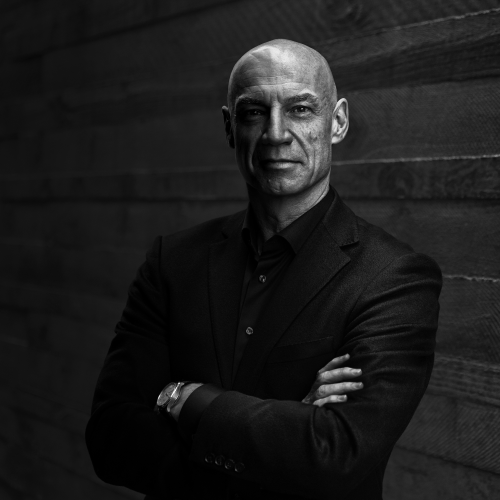
Ever wondered how the world’s top sportspeople deal with pressure? Dr Ceri Evans has seen the impact of pressure across the spectrum. In his new book Perform Under Pressure, the consultant psychiatrist outlines his strategies for dealing with stress to get you performing at your best – whether on the sportsfield or in the boardroom. We caught up with Dr Ceri Evans about the state of play when it comes to the mine field that is performing under pressure.
You’ve had your own successful sports career, why did you then choose to move into the psychology side of things?
In fact, I’m a psychiatrist, so my pathway was through medical school. I was fortunate to be able to continue to play football throughout my medical training and so rather than one following the other, sport and clinical training went hand in hand. I was fascinated by how pressure affected people, no matter what the field of performance. For a period of time I was studying psychology at Oxford University while playing professional football, so I think I learned as much by exposure and experience as from theory. The linkages were unmissable. When it came time to specialise as a doctor, I was most interested in the mind/brain and it seemed like a natural progression to train in psychiatry. I then specialised further in forensic psychiatry, which might look very different, but if you see it as involving extreme human behaviour under pressure, it places everything on a spectrum. It felt right.
“As a rule of thumb, the further you want to go in any field, the more the ability to deal with pressure becomes the differentiator, and therefore the more the mental side comes into play.”
How critical is the mental side of sport?
Often there are small technical margins between individuals and teams, which magnify the importance of mental factors. As a rule of thumb, the further you want to go in any field, the more the ability to deal with pressure becomes the differentiator, and therefore the more the mental side comes into play. Of course, it is not just about sport – it is about any human undertaking that carries significance and the outcome matters to the people involved – which is the reason reality shows are so popular. We find the fact that under pressure most people succumb, but some triumph, engaging. Pressure, failure and success makes a compelling human story-line and we intuitively know that no matter how good someone is technically – take a cooking contest, for example – under pressure, they can fall apart mentally.
How does performing under pressure look?
Although you probably intend this to mean successful performance, there are two sides to performance under pressure. On the one hand, as a personal experience, it is when we are completely ‘at one’ with our immediate environment, when we feel calm, clear and act with precision. Looking on, we see performers who seem to have time, make good decisions, and are accurate. On the other hand, when we get a sense of overload and overwhelm and we feel the weight of pressure come down on us, we lose our nerve, lose our way and lose our touch. Looking on, we see people become hesitant, impulsive, stuck, and lose their ability to perform the basics, let alone perform with timing. It’s a two way street, it’s unpredictable, and therefore it draws us in.
Does performing under pressure look the same in the boardroom as it does on the field?
Although performance in different domains obviously looks very different in terms of the external world and circumstances, our internal workings are just the same. This makes sense: there is no ‘sports lobe’ in the brain; athletes don’t pop in a different brain for performances; and no matter how we perform in our selected field, we also all succumb to a sense of overload and overwhelm in our everyday lives – I name these ‘red moments’. So external pressure in the boardroom, on the field, in the classroom, in the clinic or at home, all lead to common, predictable internal reactions and therefore familiar behaviours. Although there will be obvious differences in intensity, the patterns will be the same.
Your Red-Blue mind model is renowned for its ability to help people serious about performing under pressure. Can you give us a rundown of the model and how it works?
I developed the Red-Blue mind-model with Renzie Hanham – a well-known local graphic artist, martial arts instructor and mental skills practitioner, who has a brilliant way of cutting through the complexity to give us the simplicity we need in those tricky moments – over the last 25 years.
For performance purposes, our mind can be seen as having two systems that interact with other. The Red system is primed for survival, keeps us safe, and runs on images and feelings. It is very fast but is based on quick impressions. The Blue system is primed for potential, allows us to learn and adapt, and runs on logic, words and numbers. It is slow and takes effort, but provides detailed analysis. The Red ‘feeling’ system can dominate and compromise the Blue ‘thinking’ system when we are under threat. The Blue system, in return, can reframe situations and calm Red reactions to some extent. We want Red and Blue to be in the right balance for the situation. Red is not bad and Blue is not good – we need the energy of Red and the clarity of Blue – so we are at our best when the two are balanced and we are ‘in the purple’.
“First, we can’t change what we can’t see. You might be surprised by how unaware most people are of how much they are affected by pressure – even at moderate levels – and how this holds them back. The first step is to gain emotional control.”
Without giving away all your secrets… what are your key strategies when it comes to getting people performing at their very best?
The basic approach is to help people ‘see’ their immediate Red/Blue states of mind, understand them and make more conscious, effective choices about their responses.
First, we can’t change what we can’t see. You might be surprised by how unaware most people are of how much they are affected by pressure – even at moderate levels – and how this holds them back. The first step is to gain emotional control.
Second, it helps to have a clear picture of the overview so that we make informed decisions, not reckless ones arising from tension and tunnel vision, so that we have clarity. Rather than one-sided positive or negative thinking approaches, we want clear thinking under pressure.
Third, rather than waiting for something to happen so that we fall into the procrastination trap, we want to take effective action. Instead of avoiding tough moments and having as little discomfort as possible in our lives, we can see tough moments as the very conditions we need to put our Red-Blue pressure skills into practice.
By providing people with a method to hold their nerve, find their way and make their mark, it encourages people to not only tolerate tough situations, but to ‘walk towards the pressure’.
What is the biggest take-away you hope readers will get from your book?
Freedom from fear. That doesn’t mean that we won’t feel fear at all, just that it will no longer hold us captive. By developing an intention to be ‘comfortable being uncomfortable’ – not only tolerating tough moments but deliberately seeking them out and holding our nerve – people can get out of their own way, reduce their self-sabotaging mental chatter and escape behaviours and release themselves to perform. After reading the book, I hope that readers will want to face pressure, find their way through it, and in doing so feel free.
Slatterys is planning for Ceri Evans to lead a Deep Dive in 2020. Please contact us if you are interested in being involved.
This article is written by Melinda Collins and was originally featured on metropol and has been edited for brevity. Our thanks to them for letting us republish.
Read more…
Silver Futures
The team at Slatterys is very excited that driven by her passion for reimagining ageing, Rachel Slattery has launched the Silver Futures initiative, aimed at reshaping perceptions of later life and fostering innovation in ageing.
Welcoming Cicada Innovations as the new custodian of Tech23
Tech23 has evolved over the last 13 years as deeptech has increased in prominence and it is wonderful Tech23 will be steered and revitalised by the impressive team at Cicada Innovations.
Drawing the curtain on Tech23
TeamSlatts has loved developing and producing Tech23 for 14 years – but we have decided it’s time to draw the curtain.


